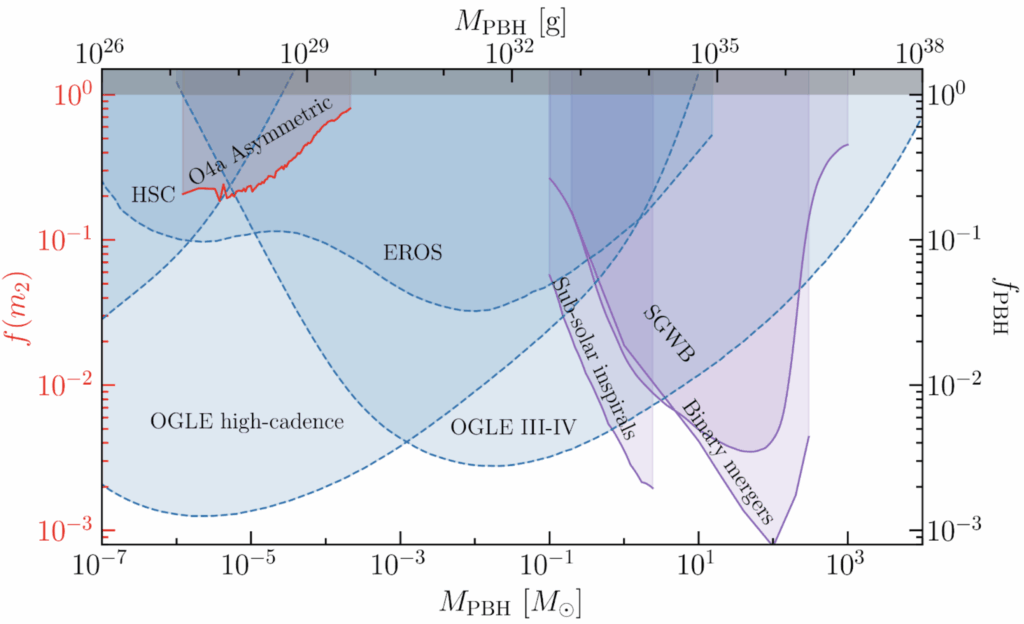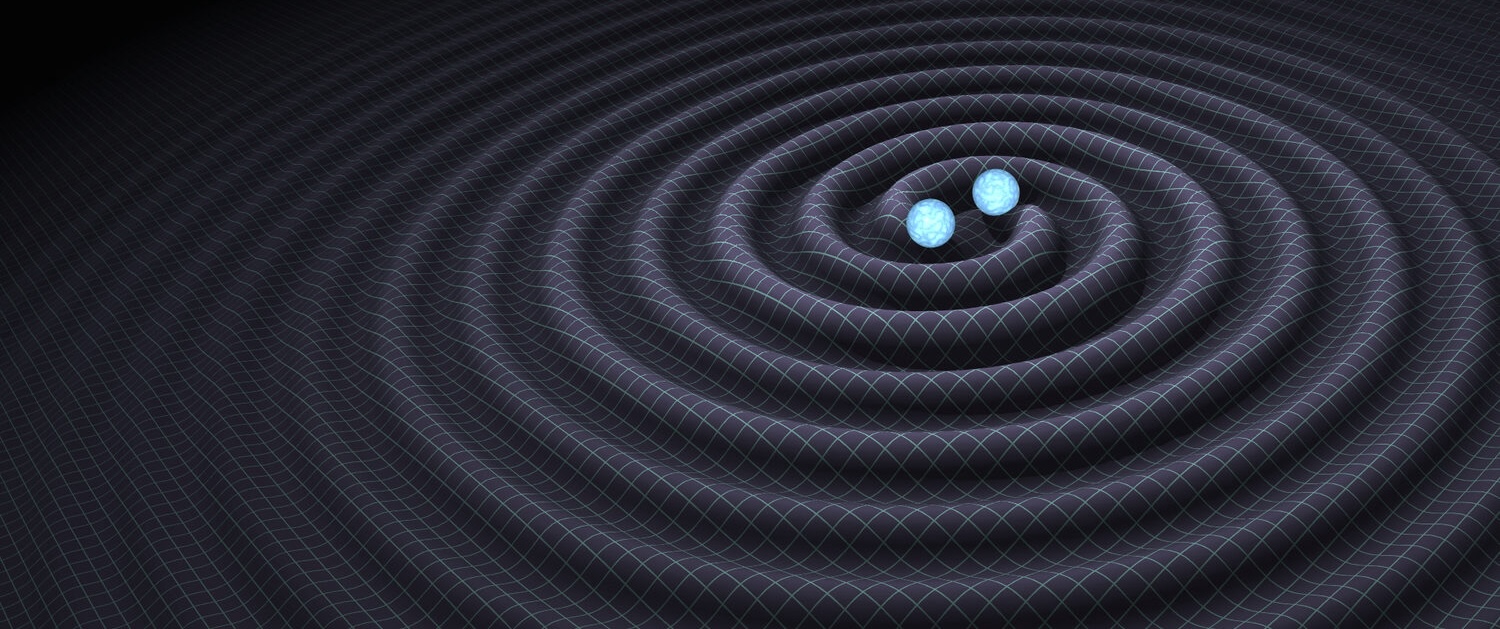Dark matter makes up 85% of the total matter in the Universe, but it is completely invisible to us. And yet, we can measure its effects on a variety of celestial objects: it roams around each galaxy and prevents stars from flying out of their orbits; it changes the directions of light rays from far-away galaxies; it guides the formation of the large-scale structures of the Universe, and it has even left imprints in the cosmic microwave background, the farthest and oldest photograph of the Universe, taken when it was only 380,000 years old.
For a long time, cosmologists have suspected that dark matter is made of a new kind of particle that barely interacts with ordinary matter. But after years of searching without finding any trace of it, other possibilities have started to look more appealing. One of them — once considered a long shot — came back into the spotlight after LIGO and Virgo made the first detection of gravitational waves.

Figure 1. Schematic illustration showing the different ways black holes can form. Left panel: Black holes from dying massive stars form through supernova explosions and are never lighter than one solar mass, written as M☉ above. Middle panel: Primordial black holes may have formed just after the Big Bang from small density fluctuations and could, in principle, have any mass—even much lighter than the Sun. Right panel: Dark-matter black holes could arise much later if clouds of exotic dark matter particles collapse under gravity. The search carried out in this work targets low-mass black holes like those in the middle and right panels.
Some of the black holes observed by these detectors have unexpected properties, such as relatively low spins and unusual masses. These clues have led scientists to wonder whether some black holes might have formed not from dying stars, but from dense clumps of matter in the first fractions of a second after the Big Bang (see Figure 1). If they do exist, these ancient black holes, called Primordial Black Holes (PBHs), could make up part—or even all—of the mysterious dark matter. With every new gravitational-wave detection, the debate over this possibility grows more intense.
The LIGO, Virgo, and KAGRA gravitational-wave detectors were designed to search for gravitational waves from merging black holes and neutron stars, non-axisymmetric rotating pulsars, exploding stars, and combinations of all of these sources. But, these detectors are so sensitive that they could also observe inspiraling PBHs hundreds of kiloparsecs away that have the masses of planets and that can be observed by our detectors over periods from hours to days. These durations are much longer than the mergers of the heavier black holes routinely detected now.
Here, we search for inspiraling binary systems of planetary-mass ultra-compact objects that emit gravitational waves as they inspiral. These signals last for at least hours at the frequencies to which our detectors are sensitive, meaning that matched filtering analyses struggle to cope with the immense amount of computational power required to search for such comparatively long-lasting signals. Thus, we have used a new method that relies on finding different tracks in time-frequency representations of the detector data, each of which would uniquely correspond to inspiraling systems with different chirp masses. The chirp mass is one of the main parameters that governs the inspiral waveform and allows us to distinguish between different astrophysical systems.

Figure 2 (Figure 4 in the paper): Upper limits on the fraction of dark matter that primordial black holes (PBHs) could make up, as a function of their mass, are shown in red. The horizontal axes indicate the PBH mass in both grams and solar masses, while the right vertical axis shows the corresponding dark-matter fraction, fPBH, used for comparison with other experimental constraints. These existing bounds typically assume that all PBHs have the same mass. In contrast, our limits (in red) apply to the abundance of PBHs at given masses (left vertical axis) in which we assume that PBHs comprise all of dark matter. Each curve reflects specific assumptions about PBH formation mechanisms and their mass distribution. Our results constrain this fraction to be below unity for masses between [10-6,10-4] solar masses, complementing existing microlensing limits from HSC, EROS, and OGLE, although they assume that all of dark matter is composed of PBHs and are only valid for specific ways in which PBHs form.
Our work uses data from the first part of the fourth observing run of Advanced LIGO, Advanced Virgo and KAGRA (O4a) to determine if any ultra-compact objects were inspiraling in our galaxy during data collection. Although we have not detected a signal, as shown in Figure 2, we can place upper limits on (1) how far away we could have seen such inspirals, (2) the rates at which these inspirals would occur, and (3) the fraction of dark matter that could be composed of PBHs.
Our search has produced the first gravitational-wave constraints on the fraction of dark matter that could be due to PBHs in the planetary-mass regime. While less sensitive than searches targeting isolated black holes, our study probes PBHs that form in binaries, giving complementary constraints on their possible abundance across many masses.
Find out more:
- Visit our websites:
- Read a free preprint of the full scientific article here or on arxiv.
- Gravitational-Wave Open Science Centre data release for GWTC-4.0 available here.
Back to the overview of science summaries.

